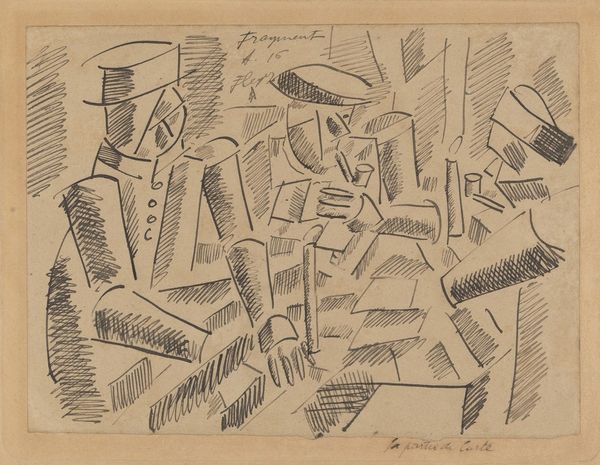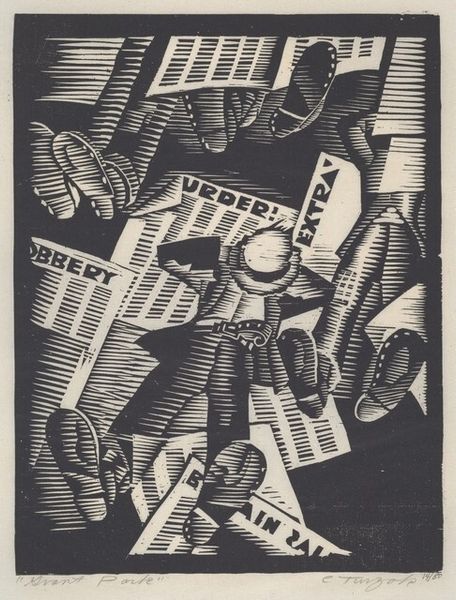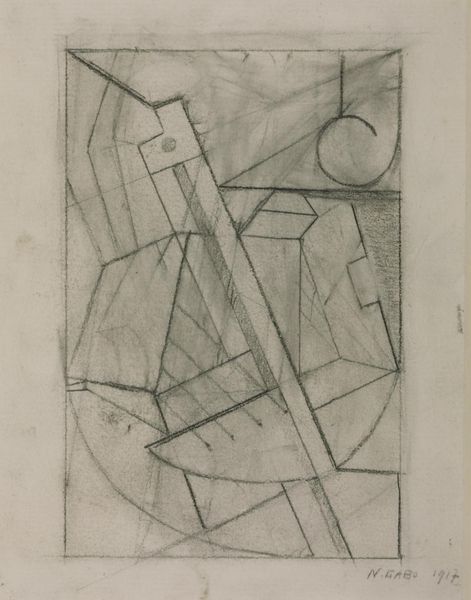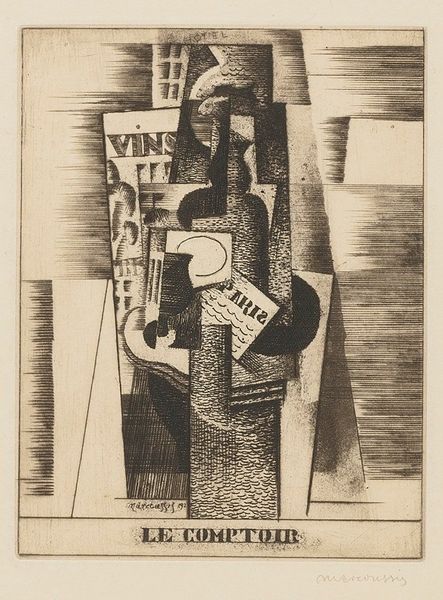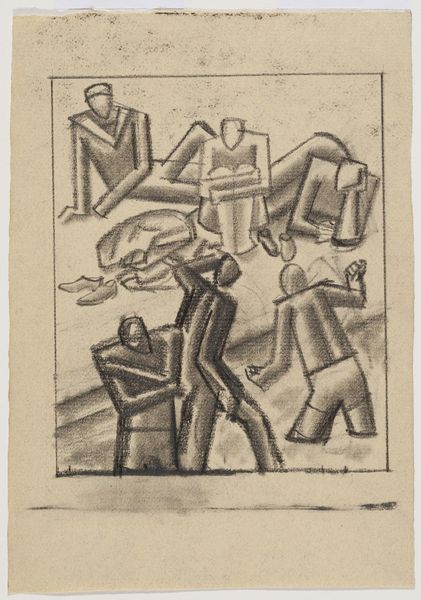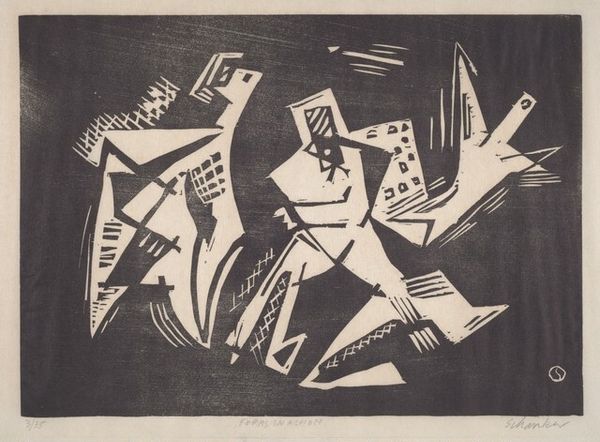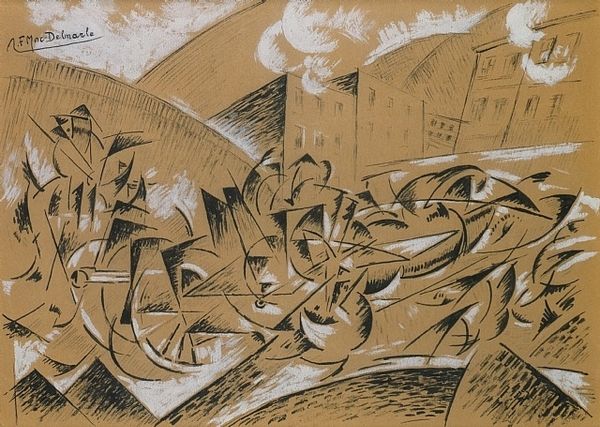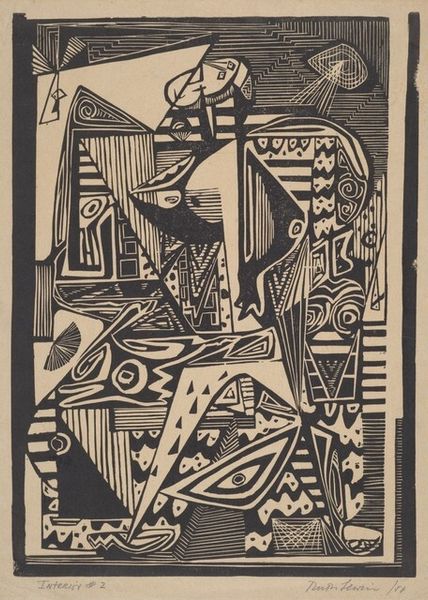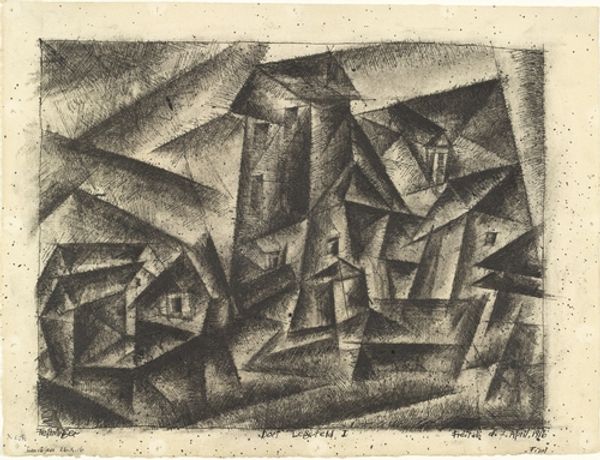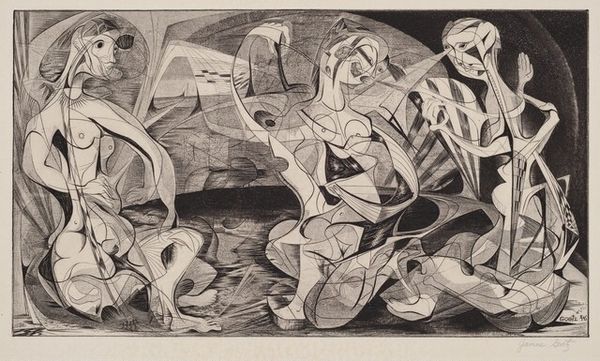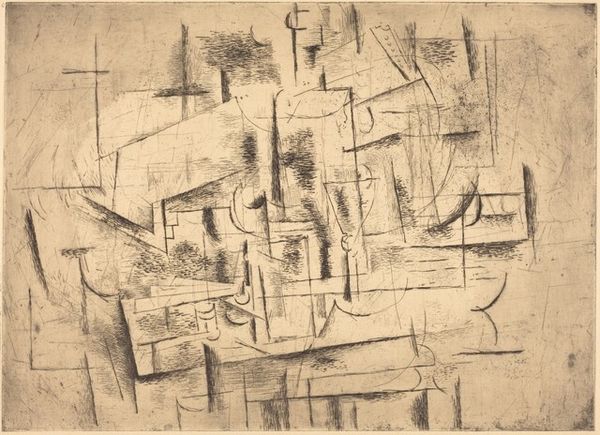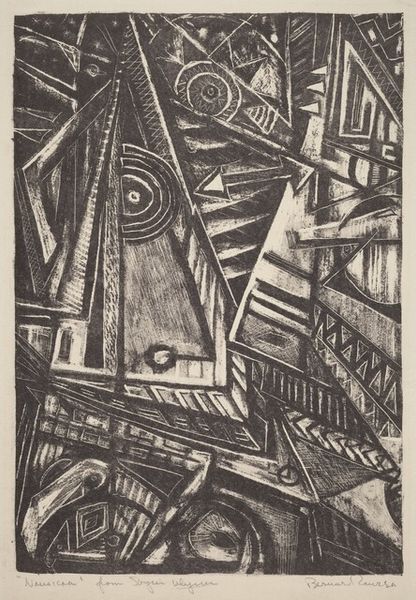
Untitled (Cubist Abstraction With Two Female Figures) c. 1937 - 1940
0:00
0:00
drawing, print, etching
#
portrait
#
drawing
#
cubism
#
ink drawing
# print
#
etching
#
figuration
#
abstraction
Dimensions: plate: 158 x 224 mm sheet: 211 x 268 mm
Copyright: National Gallery of Art: CC0 1.0
Editor: Here we have Jules André Smith’s "Untitled (Cubist Abstraction With Two Female Figures)," likely created between 1937 and 1940. It’s an etching, isn’t it? The monochromatic quality creates such a subdued, almost somber, mood, despite the lively lines of the cubist figures. What catches your eye about this piece? Curator: Well, let's think about etching itself. It’s a printmaking technique— a *reproductive* technology, not an *original* one. The artist is creating a matrix from which multiples are made. Smith would have handled materials like acid, metal plates, and a printing press… the skill is embedded in his material and in the exploitation of these steps. I'm intrigued by the interplay between the female figure and the sharp geometrical forms within this process. Do you think that impacts our reading of femininity itself here? Editor: I hadn't considered that. The etching process adds another layer to the fragmentation already present in the Cubist style. So, you see the artist making a statement through both the subject matter and *how* that subject matter is rendered with the materials at hand? Curator: Precisely. He's pushing against traditional modes of artistic production. Think about how craft was devalued compared to fine art in the traditional art world, and the work itself makes us question these hierarchical categorizations. The marks of labor, the "hands-on" aspect… how does the method enhance or challenge our perception of those figures represented? Editor: That's fascinating. It makes me see it less as just a portrait and more as a commentary on artistic practice and the representation of the body. So it shows an intentional rejection of mainstream standards! Curator: Exactly. We have seen how Smith, through both his subject and artistic process of that subject, actively created something radically novel.
Comments
No comments
Be the first to comment and join the conversation on the ultimate creative platform.
